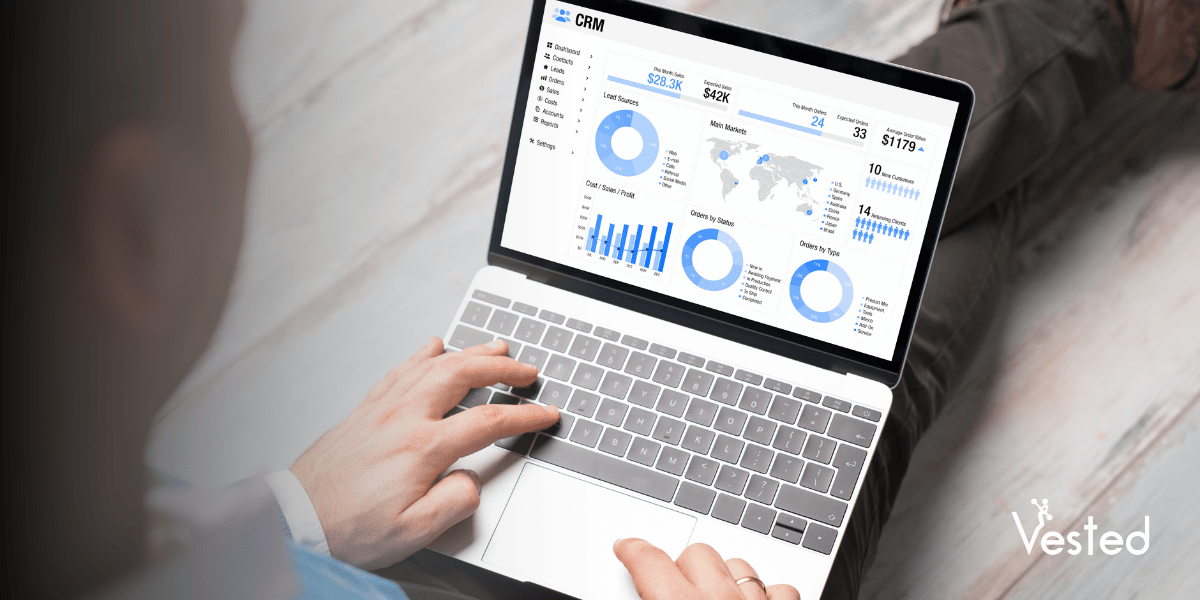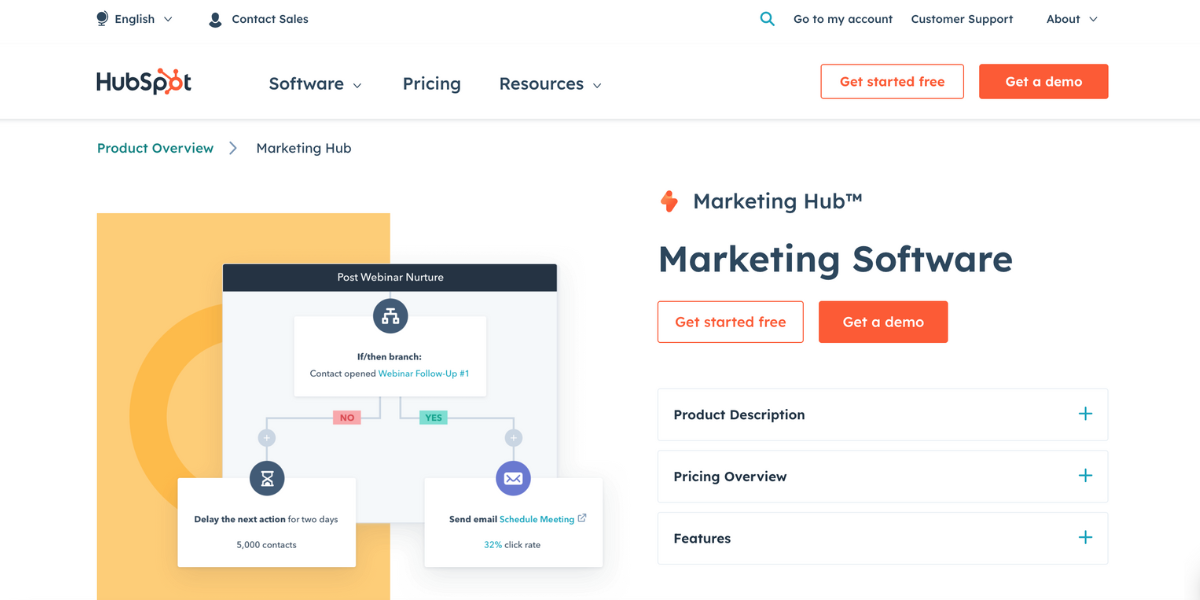10-Step Guide to Building Sales Stages in HubSpot
Crafting the right sales stages is more than just ticking boxes—it’s about mapping your customers’ real buying journey so your team can guide...

4 min read
![]() Vested Marketing
:
May 7, 2025 6:18:18 PM
Vested Marketing
:
May 7, 2025 6:18:18 PM
A well‑tuned sales pipeline is the backbone of predictable, scalable growth. If you’re using HubSpot—or considering it—you already have powerful tools at your fingertips. In this guide, we’ll walk through how to build, maintain, and optimize your HubSpot sales pipeline so you can hit (and exceed) your revenue goals.

Your sales pipeline is more than just a list of deals—it’s a living forecast of future revenue and a roadmap for your team’s daily activities. With clear stages, reliable metrics, and consistent reviews, you can:
Accurately predict monthly and quarterly revenue
Identify bottlenecks before they cost you deals
Coach reps where they need it most
Scale prospecting, closing, and follow‑up with confidence
HubSpot’s CRM and pipeline tools make it easy to visualize every opportunity and automate key tasks—so let’s dive into how to set yours up for success.
A fast-growing real estate team managed tenant inquiries, leasing opportunities, and development projects across multiple tools but nothing connected. As visibility declined and deal volume increased, they needed a scalable system to keep pace.
We rebuilt their pipeline in HubSpot Sales Hub Enterprise, giving them clarity at every stage and a unified flow their whole team could rely on.
→ Read the full breakdown of their transformation.
Don’t just copy a template—tailor your stages to match your buyers’ journey. A common structure looks like:
Connect: Initial outreach or content engagement
Appointment Set: First meeting scheduled
Appointment Completed: Meeting held and next steps agreed
Solution Proposed: You’ve outlined how your product solves their pain
Proposal Sent: Contract or quote is under review
Tip: If your product is complex, break stages down further (e.g., “Technical Demo,” “Negotiation”).
Use HubSpot reports to find out:
What percentage of deals move from one stage to the next (yield probability)
How long, on average, deals dwell in each stage
For example, if 75% of demos convert to proposals in three weeks, you can forecast revenue and coach reps to hit those benchmarks.
Set your revenue goal (e.g., $100K/month)
Divide by average deal size to find the number of wins needed
Adjust for stage probabilities to determine how many opportunities must enter each stage
This reverse‑engineering approach tells you exactly how many new leads, demos, and proposals you need every month.
Look for common traits among closed‑won deals:
Which messaging or resources resonated?
What follow‑up cadence worked best?
Which industries or personas converted most frequently?
Capture these insights in your HubSpot CRM so every rep can replicate success.
Document a playbook that aligns with your stages and benchmarks:
Standardized outreach sequences
Demo agendas tied to buyer pain points
Proposal templates with optional upsells
As you gather new data, revisit and refine this process to improve close rates.
A healthy pipeline always has more early‑stage opportunities than late‐stage ones. To ensure that:
Automate lead‑capture forms and chatbots in HubSpot
Encourage reps to log prospecting activities daily
Blend methods (cold outreach, social selling, inbound offers)
Stat: 56% of sales pros say social media is a top source for new leads—don’t overlook LinkedIn and industry forums.
HubSpot’s sales tools integrate seamlessly with the Loop Marketing approach, ensuring every automation feeds insights back into the next cycle. This closed-loop strategy connects marketing, sales, and service data to improve conversion rates, shorten deal cycles, and scale smarter.
Experts recommend 10–12 touches over four weeks, mixing calls, emails, and social outreach. In HubSpot, sequence templates ensure no lead slips through the cracks.
Weekly or monthly, gather reps to:
Analyze deals in early stages for risks and next steps
Surface objections and competitor intel
Coach reps on acceleration tactics
Using HubSpot’s deal board and custom reports, you’ll spend less time hunting for data and more time strategizing.
Deals that haven’t moved in longer than your average cycle should trigger a “breakup” sequence. If no response, archive the deal and tag the contact for a future re‑engagement campaign. This keeps your forecast realistic and your team focused on active opportunities.
Pipeline velocity is a critical metric that tells you exactly how much revenue is flowing through your sales process each day. It’s calculated using this simple formula:
Pipeline Velocity = (Number of Deals × Win Rate × Average Deal Size) ÷ Sales Cycle Length
Let’s say your team has 50 active deals, closes 40% of them, and your average contract is worth $10,000. If it takes 70 days on average to close a deal, your pipeline velocity works out to:
(50 × 0.40 × $10,000) ÷ 70 = $2,857 per day
That means, on average, $2,857 is moving toward your revenue goals every single day. To boost that number:
Increase deal volume through targeted prospecting
Improve win rates via sales coaching and better qualification
Grow deal size by bundling services or upselling
Shorten cycle length with a clear process and timely follow‑up
HubSpot dashboards can display this metric in real time—so you know exactly when to pivot strategy.
HubSpot offers a suite of built‑in tools and templates designed to accelerate your pipeline setup and AI tools to streamline everyday sales activities. By tapping into these resources, you can save time on manual configuration, ensure consistency across your team, and focus on high‑impact selling rather than administrative tasks.
Pipeline Templates: Start from HubSpot’s pre‑built pipelines, then customize stages, probabilities, and deal properties to reflect your unique sales process.
Sequence Automation: Build automated email and task sequences that enroll prospects based on form submissions, page views, or other engagement triggers—keeping leads moving forward without manual follow‑up.
Deal Rotations & Assignment: Implement round‑robin or territory‑based assignment rules to distribute new deals evenly across your team, ensuring fair workloads and faster response times.
Reports & Dashboards: Create tailored pipeline reports and dashboards that visualize stage‑by‑stage performance, pipeline velocity, and forecast accuracy—giving you real‑time insights to make data‑driven decisions.
A predictable, data‑driven sales pipeline is within reach when you leverage HubSpot’s CRM power. Ready to take the next step?
Download the free Sales Pipeline Template to map your stages and probabilities.
Schedule a HubSpot audit with our team to uncover quick wins.
Explore our blog for deeper dives into pipeline velocity, follow‑up sequences, and more.
By building, maintaining, and measuring your pipeline in HubSpot, you’ll not only forecast more accurately—you’ll also empower your team to close deals faster and consistently hit revenue targets. Start optimizing today!
![]() As a certified HubSpot Partner Agency, we not only understand the benefits of using the inbound marketing platform to increase traffic and engagement, improve SEO, generate leads, design effective websites and boost sales, we know how to make it happen.
As a certified HubSpot Partner Agency, we not only understand the benefits of using the inbound marketing platform to increase traffic and engagement, improve SEO, generate leads, design effective websites and boost sales, we know how to make it happen.
We are inbound marketing experts, SEO gurus and top-notch website developers.
Our team of Engineers Turned Marketers can help get you noticed - for a more innovative and effective way to reach customers, or provide a more seamless way for companies to find your services. Inbound Marketing has no limit to industry, serving from Crypto & NFT, mining, oil and gas, technology & automation, engineering, technology, construction, healthcare, to industrial turnarounds & manufacturing.

Crafting the right sales stages is more than just ticking boxes—it’s about mapping your customers’ real buying journey so your team can guide...

There's no doubt about it - data is essential to driving revenue growth for your business. But all too often, businesses don't take the time to...

With HubSpot Marketing Hub tools and a stellar marketing strategy, you can attract new customers and grow your business - #goals. As a certified ...